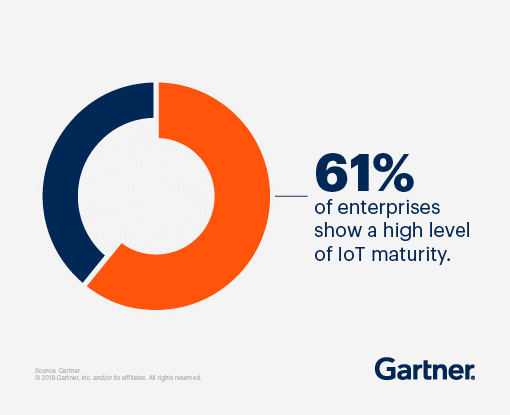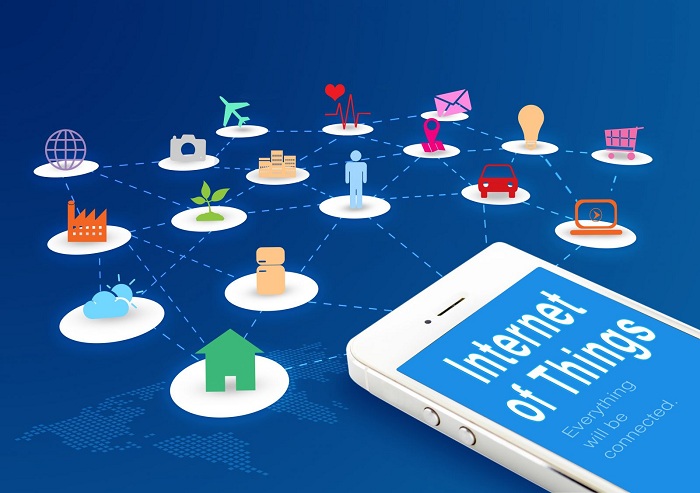
The IoT architecture needed to support embedded systems, wireless sensor networks, and cloud computing is evolving rapidly, coupled with the low-power technologies that have also miniaturized the device size. This is helping steamroll broader applications in industrial and consumer areas with newer fire-and-forget use-cases that utilize remote sensors on autopilot for data collection. Easy to implement, inexpensive systems, with increased security capabilities, are propelling the market forward.
It is true that pandemic impacted companies producing and supporting the IoT infrastructure like many others, however, in many sectors, IoT saw an increase in growth and scale – these include oil and gas, the automotive industry, warehousing, logistics, health care devices, and large-scale manufacturing. As a net result, rather than shrinking and losing market share, some IoT companies experienced unexpected growth on the hardware side and sustained growth on the software end.
Microsoft has set the tone on investments in IoT endpoint security with the acquisitions of cybersecurity startups ReFirm Labs and RiskIQ to bolster their control of IoT endpoints. Most recently Microsoft acquired CloudKnox, a relatively young company with 60 employees, that was founded in 2015. CloudKnox is a cloud security platform that provides privilege access, ensures compliance, and provides analytics on attacks on IoT endpoints. In short, they help protect a company’s cloud infrastructure from compromising attacks.
Investments are stronger than ever in the IoT world, fueled by improvements in security, lowered costs of materials, and increased adoption by the public and private sectors. The global IoT market will be worth $1.4 billion by 2027 with an annual growth rate of 24.9%.
Noteworthy IoT Investments
Finite Slate, a cybersecurity startup, raised $30 million in Series B funding led by Energize Ventures. Finite Slate focuses on identifying, and protecting, vulnerabilities in connected devices, that assist manufacturing, power plant infrastructure, supply chains, and more. Regulatory bodies and consumers are starting to require more control and real-time information on goods that are shipped. The product addresses tighter regulation in regard to ensuring the security of embedded sensors and devices.
Elon Musk’s SpaceX acquired Swarm Technologies, which operates a small satellite constellation providing IoT services. Swarm Technologies launch and monitor hard-drive sized satellites into orbit. SpaceX plans to integrate the IoT software into the fleet of 1600+ functional satellites that SpaceX already operates. Swarm’s “nanosatellites” only weigh about a pound and their security functions are easily applied to the much larger 550+lb SpaceX satellites.
IoT startup Wiliot has raised a whopping $200 million from SoftBank Vision Fund. The battery-free sensors produced by the company serve a wide range of functions. They are about the size of a large postage stamp and can be attached to innumerable products like fruit shipments, pharmaceuticals, clothing, and thousands of other products. Their sensors monitor things like temperature, humidity, location, and motion.
Many other interesting IoT companies have garnered significant investments in recent times. Ably raised $70M for a solution that enables different platforms to connect and exchange data fluidly. Sentera, an agricultural tech company that focuses on machine learning to reduce planting waste, has raised $25M.
 Important IoT Trends and AI fusion
Important IoT Trends and AI fusion
What is driving this growth? Recent estimates show that there will be 35 billion IoT devices in the world by 2021. That number will more than double by the end of 2025 to 75 billion. According to a report by analysts at Market Research Engine, just the Industrial IoT (IIoT) market is expected to exceed $176 billion by 2022.
The industries using IoT are varied and include manufacturing, farming, new high-tech cities, transportation, healthcare, and supply chain logistics. Remote work is driving growth in the internet of things as employees must be enabled to monitor, and connect in real-time, while off-site.
IoT endpoint is an area with many opportunities as even today many IoT devices have poor built-in security. Those that did have adequate protection were often left unguarded by uninformed owners. Attacks that take advantage of weak factory settings were common. This is unsafe as most of these insecure devices are attached to home computers, cell phones, and security systems.
Investments in 2020 and 2021 clearly show that big tech companies are desperate for IoT endpoint security services. The burden is now falling on the manufacturers of these devices to provide a minimum level of cybersecurity.
Moving away from Security, the major undercurrent driving newer use cases of IoT is Artificial Intelligence (AI). When the two technology forces of AI and IoT combine into AIoT, that holds the promise of a more connected future, as is evident from the list of solutions below.
IoT devices like Amazon Alexa are driving sales in online retail and changing the consumer behavior for ordering via an IoT device, tracked using an IoT sensor, and then used and monitored by built-in IoT technology in the product they bought.
Storing and tracking of goods is simplified when IoT sensors can detect when a shelf is emptied or when a product leaves a warehouse and immediately places a reorder. The devices are quickly becoming economical, with extended battery life, driving retail companies in the direction of using smart sensors.
Healthcare and medical devices are rapidly changing to use IoT technology. Using smart sensors to collect, analyze using AI, and transmit knowledge-tagged patient data in real-time isn’t new anymore. This helps monitor patients remotely on autopilot with critical alerts, especially when hospitals are understaffed, and, in some cases, prevents patients from having to leave their homes. Automated insulin delivery systems are being connected to IoT implants that monitor blood glucose levels. The positive impact of IoT on medical technology is driving the growth that translates into a significant portion of the $175+ billion IoT market by 2025.
The confluence of AI and IoT is a very significant factor as IoT devices continue to generate more than a billion GB of data. AI is a critical technology in the equation to add machine intelligence to IoT connectivity and automate human-like knowledge-based processing. This is making AIoT fusion imperative as IoT continues to transform how to find new uses for the technology.













